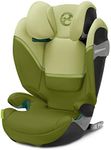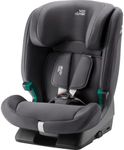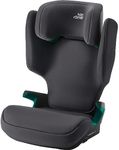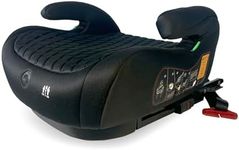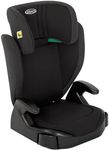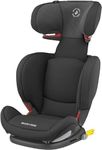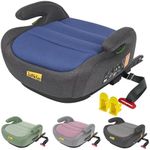Buying Guide for the Best Booster Car Seats
Choosing the right booster car seat is crucial for ensuring the safety and comfort of your child during car rides. Booster seats are designed to elevate your child so that the car's seat belt fits properly over their shoulder and lap, which is essential for effective restraint in the event of a collision. When selecting a booster seat, consider your child's age, weight, height, and the type of vehicle you have. It's important to ensure that the booster seat you choose meets safety standards and fits well in your car. Additionally, consider the ease of installation and how comfortable the seat will be for your child, especially on longer journeys.Weight and Height LimitsWeight and height limits are crucial specifications that determine whether a booster seat is suitable for your child. These limits ensure that the seat can safely support your child and that the seat belt will fit correctly. Booster seats typically have a minimum weight limit of around 40 pounds and can accommodate children up to 100 pounds or more. Height limits usually range from about 38 to 57 inches. To choose the right booster seat, measure your child's current weight and height and select a seat that accommodates their size while allowing room for growth.
Type of Booster SeatThere are two main types of booster seats: high-back and backless. High-back booster seats provide head and neck support and are ideal for vehicles without headrests or with low seat backs. They also help position the seat belt correctly. Backless booster seats are more portable and are suitable for cars with headrests. When choosing between the two, consider your vehicle's seat design and whether your child needs additional head support. High-back boosters are often recommended for younger children transitioning from a forward-facing car seat.
Installation MethodThe installation method of a booster seat is important for ensuring it is securely positioned in your vehicle. Some booster seats use the car's seat belt to secure the seat, while others may have LATCH connectors for added stability. LATCH (Lower Anchors and Tethers for Children) systems can make installation easier and more secure, but not all vehicles are equipped with LATCH anchors. Consider your vehicle's compatibility and your preference for ease of installation when selecting a booster seat. Always follow the manufacturer's instructions for proper installation.
Safety FeaturesSafety features in booster seats can include side-impact protection, energy-absorbing foam, and adjustable headrests. These features enhance the safety of the seat by providing additional protection in the event of a crash. Side-impact protection is particularly important as it helps shield your child from side collisions. When choosing a booster seat, look for models that have been tested and meet or exceed safety standards. Consider any additional safety features that may be beneficial based on your child's needs and your driving habits.
Comfort and AdjustabilityComfort and adjustability are key factors in ensuring your child is happy and secure during car rides. Look for booster seats with padded seats, armrests, and adjustable headrests to accommodate your child's growth. Some seats also offer recline options for added comfort on long trips. Consider how easy it is to adjust the seat as your child grows and whether the seat cover is removable and washable for easy maintenance. A comfortable booster seat can make a significant difference in your child's willingness to use it consistently.

